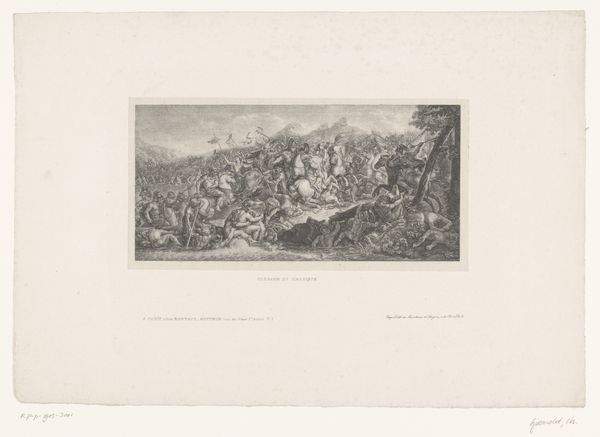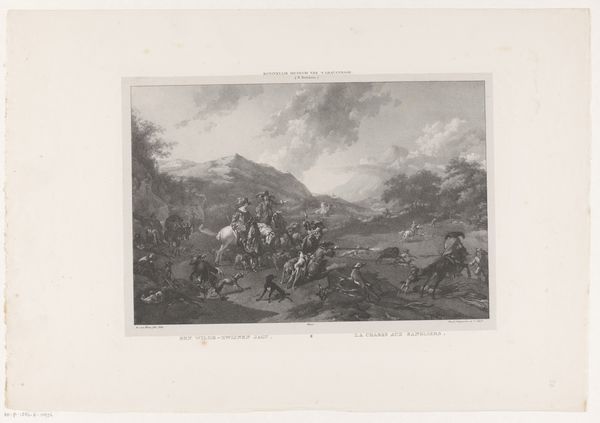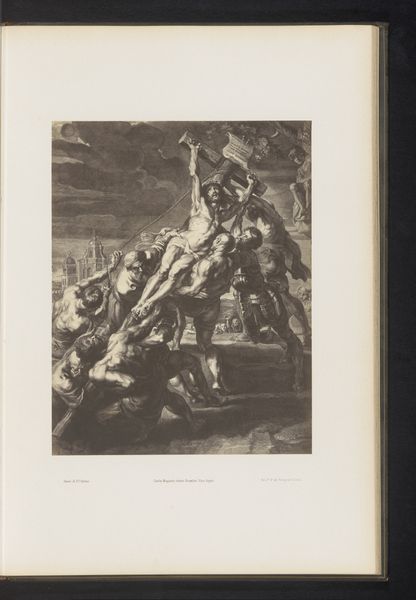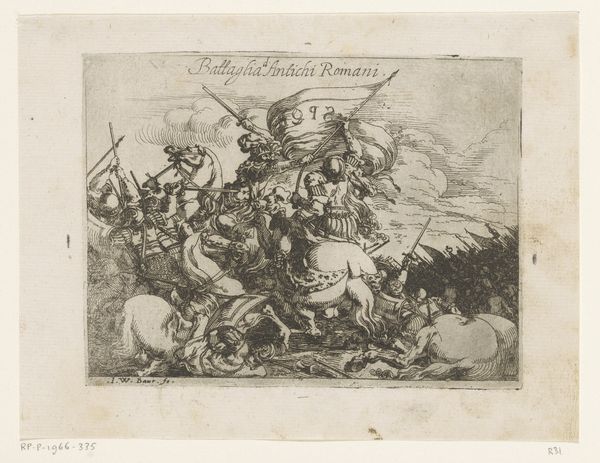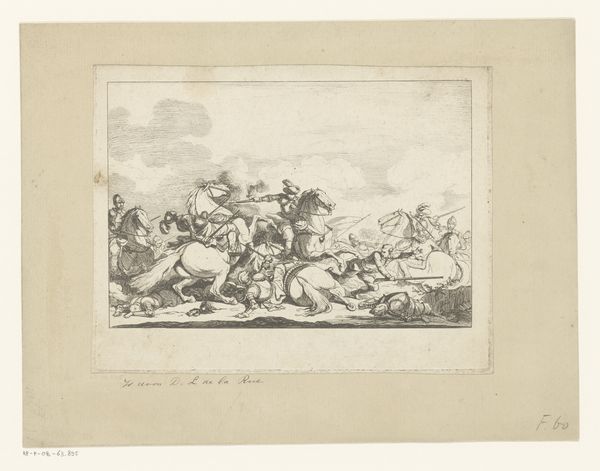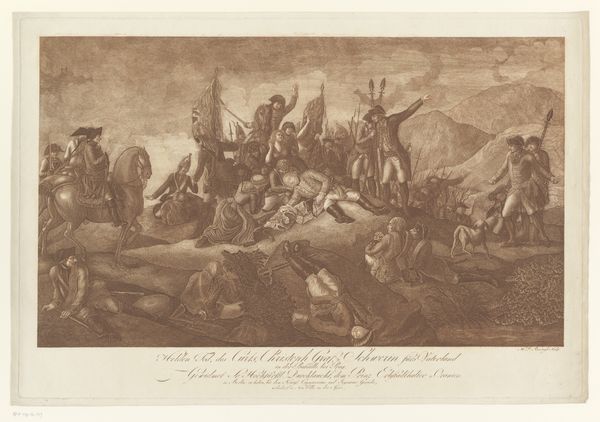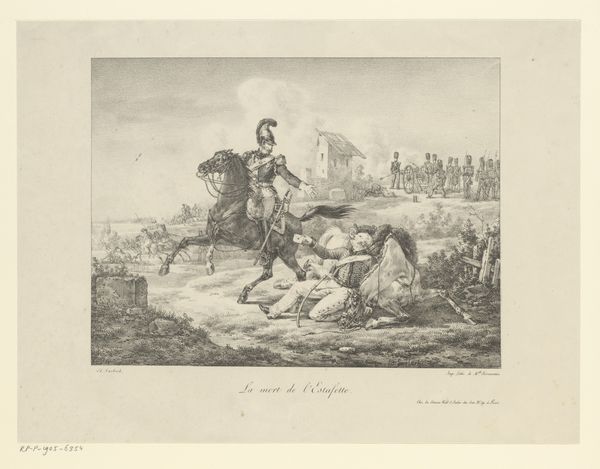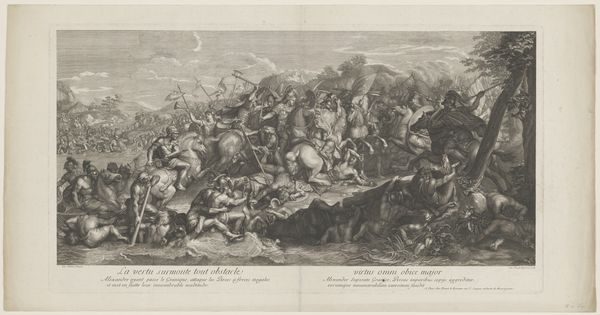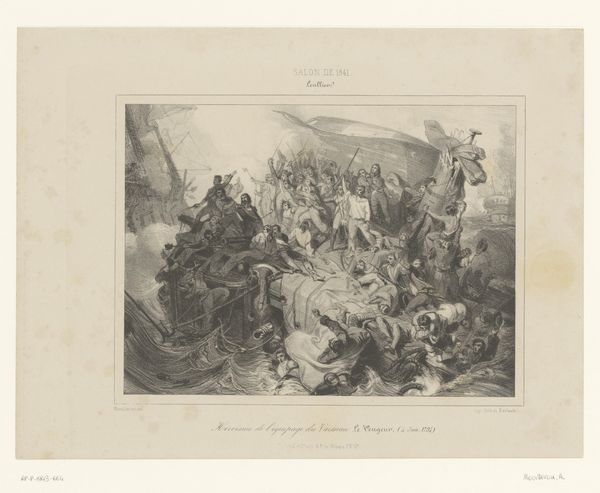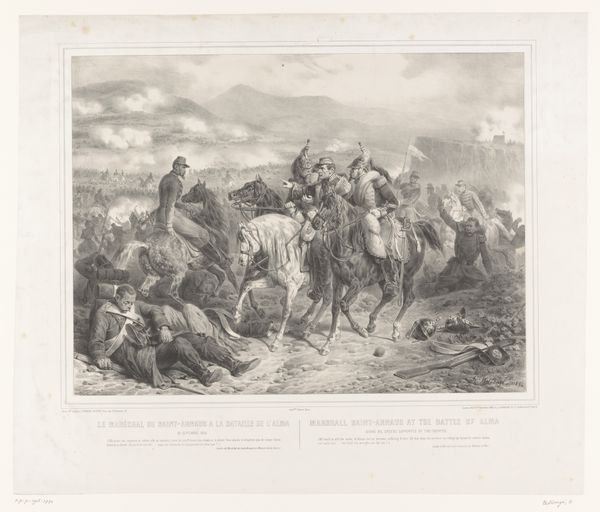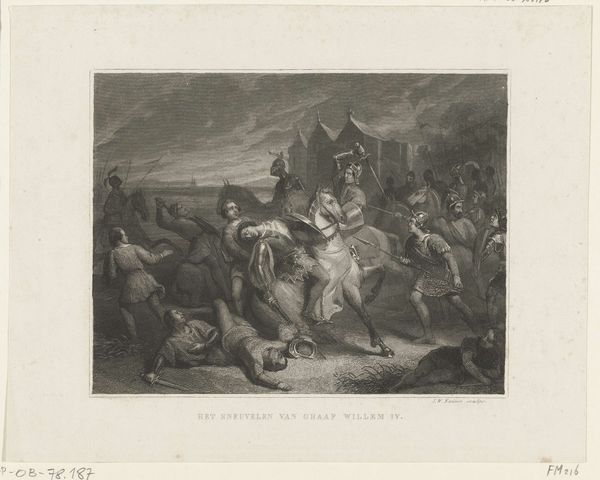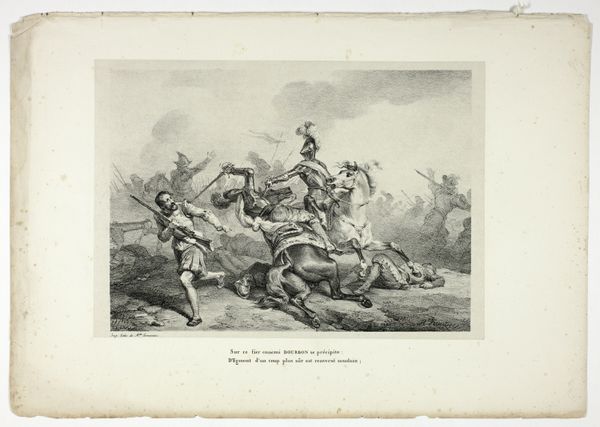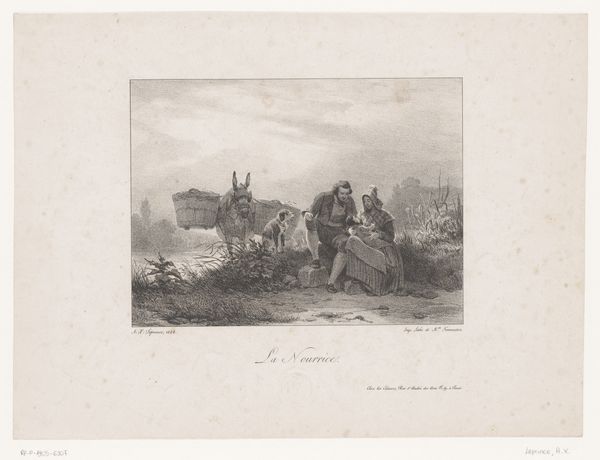
drawing, print, pencil, engraving
#
pencil drawn
#
drawing
# print
#
pencil sketch
#
landscape
#
charcoal drawing
#
pencil drawing
#
pencil
#
history-painting
#
engraving
Dimensions: 219 mm (height) x 270 mm (width) (bladmaal), 135 mm (height) x 175 mm (width) (billedmaal)
Curator: Look at the chaotic energy captured in this print titled, "Bataille de Rivoli, 14 janvier 1797," created in 1892 after Horace Vernet’s work. It depicts a frenzied battle scene amidst a mountainous backdrop. The medium here is a wood engraving by S. Chagren. Editor: My first impression is of a struggle between order and disorder. The background looks to be peaceful, yet there's so much brutality taking place at the forefront of the work. Curator: Vernet was known for his large-scale depictions of battles, often commissioned to bolster national pride. The piece immortalizes Napoleon's victory at Rivoli during the French Revolutionary Wars. I think what we see here is as much a social record of France at this point in history as it is a scene from battle. Editor: Exactly. By recreating this work nearly a century later, S. Chagren also creates a conversation about France's past and how that relates to ideas of masculinity and heroism in the late 19th Century. What does it mean to go back to this story and retell it through a different artistic lens, when social and political factors differ? Curator: It's an important question to ask of these types of history paintings in general. Engravings like this also played a crucial role in disseminating these glorifying images widely. Before photography, they were key to shaping public memory. We should examine this in our contemporary media environment, as well. Editor: And looking at the faces, you can see the variety of social classes that fought on both sides of the war. It shows the universality of violence, irrespective of status or title, because violence remains violence. There are bodies strewn on the ground as a result. Curator: The composition definitely drives the narrative home. From the figures falling out of the foreground towards the viewer to the central general placed near a landscape that feels infinite, there's this distinct pull toward nationalistic ideals, while maintaining a wide field of death. Editor: Agreed. The high level of detail encourages us to investigate, but not necessarily empathize with these historical figures. The focus remains on spectacle and its social influence across the ages, rather than individual stories of struggle or valor. Curator: Seeing it this way really drives home its significance, doesn't it? Editor: It really does; this helps us appreciate how historical moments are viewed and valued over time.
Comments
No comments
Be the first to comment and join the conversation on the ultimate creative platform.
